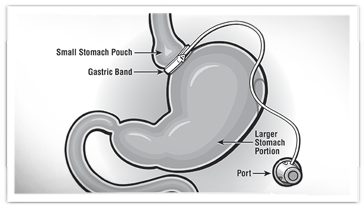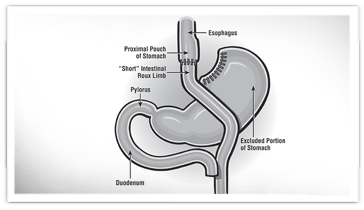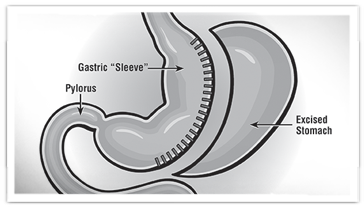Types of Bariatric Weight Loss Surgery and Other Procedures
Several proven weight loss surgical procedures are available at Inova Fair Oaks Hospital. We also offer a nonsurgical bariatric procedure using what is called the intragastric balloon.
Our nationally recognized and highly experienced bariatric surgeons will expertly guide you as you evaluate the weight loss surgical treatment that suits your lifestyle and overall health.
Laparoscopic gastric banding

Gastric banding is a purely restrictive surgical procedure during which a silicone band is placed around the uppermost part of the stomach, separating the stomach into one small and one large portion. The band is adjustable and can be periodically tightened or loosened depending on the patient's needs.
Gastric bypass surgery (Roux-en-Y)

Inova Fair Oaks Hospital specializes in mini-incision and laparoscopic gastric bypass surgery. Both of these techniques are less invasive than traditional surgery and allow for a faster, more comfortable recovery.
Sleeve gastrectomy
 The sleeve gastrectomy generates weight loss by restricting the amount of food (and therefore calories) that can be eaten by removing more than 70 percent of the stomach. A smaller stomach shaped like a "sleeve" is left behind. The surgery is purely restrictive and does not involve bypassing the small intestine.
The sleeve gastrectomy generates weight loss by restricting the amount of food (and therefore calories) that can be eaten by removing more than 70 percent of the stomach. A smaller stomach shaped like a "sleeve" is left behind. The surgery is purely restrictive and does not involve bypassing the small intestine.
Biliopancreatic diversion with duodenal switch (BPD/DS)
BPD/DS is a combined restrictive and malabsorptive procedure that reduces the size of the stomach by 70 percent. The pouch created is a bit larger than with other restrictive procedures. The pouch is connected to the lower part of the small intestine and greatly reduces the absorption of calories and nutrients.
Non-surgical intragastric balloon
The intragastric balloon is ideal for patients that want to lose 30-50 pounds and avoid invasive surgery. The synthetic, sterile fluid-filled balloon sits in the stomach, filling approximately one third of the space inside. This helps you feel less hungry and control your portions. The gastric balloon must be removed after 6 months, after which time dietary support will help you maintain a more controlled diet and therefore your weight loss.
Risks of surgery
Weight loss surgeries are major operations on patients who often have many risk factors. Complications range from minor to major and immediate to long term. Immediate complications include leaks (1 to 4 percent, some of which would require re-operation), pulmonary emboli (blood clot to the lung), and death (1-4/1,000 patients). These risks will be reviewed by our weight loss surgeons during the free informational seminars 